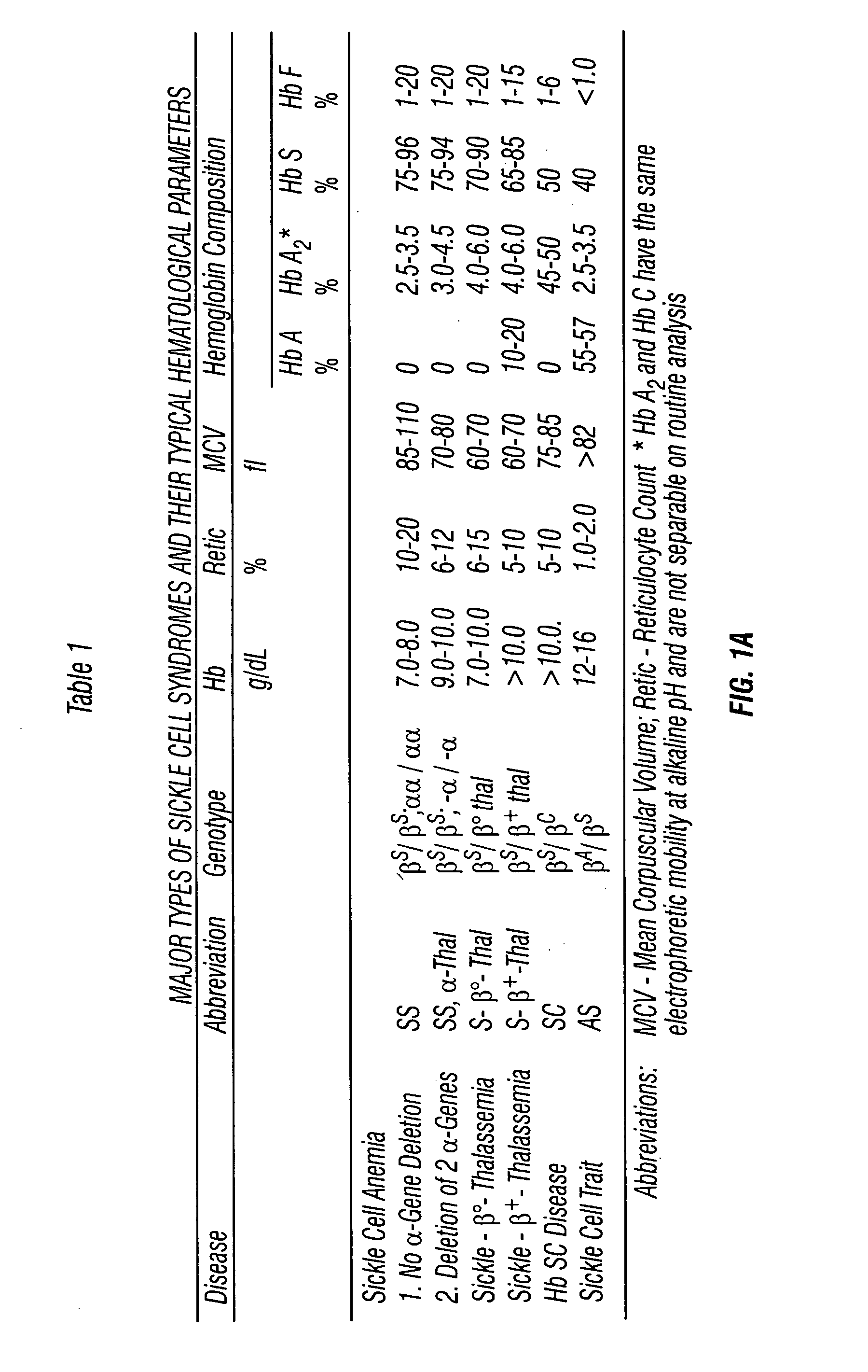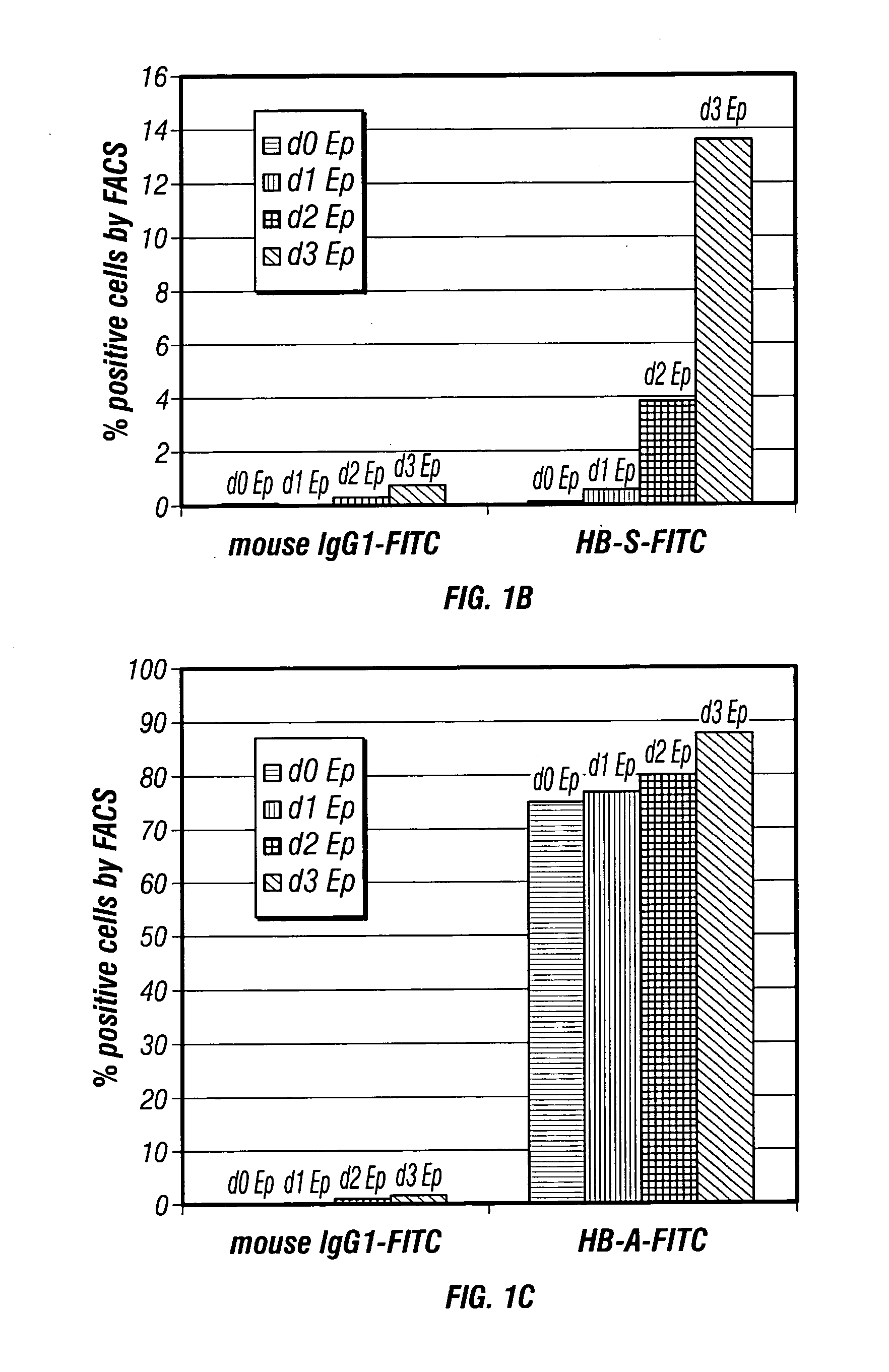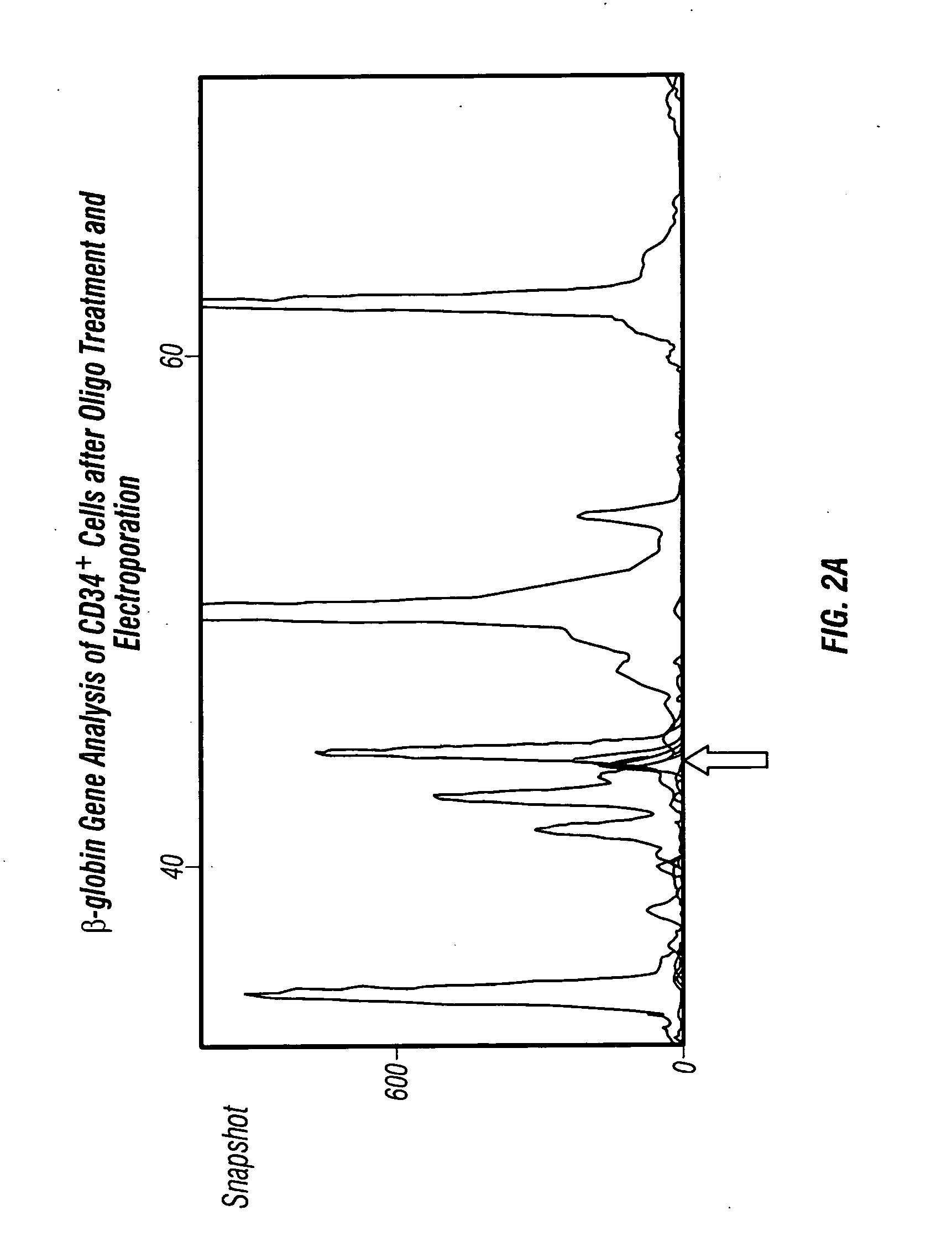Methods for production of non-disease causing hemoglobin by ex vivo oligonucleotide gene editing of human stem/progenitor cells
- Summary
- Abstract
- Description
- Claims
- Application Information
AI Technical Summary
Benefits of technology
Problems solved by technology
Method used
Image
Examples
Embodiment Construction
[0012] Hemoglobin and Hemoglobinopathies
[0013] Hemoglobin (Hb) is the respiratory pigment essential for human life as the oxygen transporter to tissues and constitutes about 90% of the dry weight of the average red blood cell. Hemoglobin also functions to transport carbon dioxide and provide a buffering action to maintain pH within a normal range. Hb interacts with three diffusible ligands: O2 (oxygen), CO2 (carbon dioxide) and NO (nitric oxide). A normal hemoglobin molecule (Hb A) is a tetramer composed of two dissimilar pairs of polypeptide chains (alpha2beta2), each of which encloses an iron-containing porphyrin designated heme. In adults, 96-98% of hemoglobin is Hemoglobin A which has two alpha chains and two beta chains. Properties of normal adult hemoglobin are that it is soluble in both oxy and deoxy states; it is stable; it binds oxygen reversibly with P50 of about 27 torr; it maintains iron in the reduced ferrous state (Fe2+) in the heme moiety; and it contains balanced am...
PUM
 Login to View More
Login to View More Abstract
Description
Claims
Application Information
 Login to View More
Login to View More - R&D
- Intellectual Property
- Life Sciences
- Materials
- Tech Scout
- Unparalleled Data Quality
- Higher Quality Content
- 60% Fewer Hallucinations
Browse by: Latest US Patents, China's latest patents, Technical Efficacy Thesaurus, Application Domain, Technology Topic, Popular Technical Reports.
© 2025 PatSnap. All rights reserved.Legal|Privacy policy|Modern Slavery Act Transparency Statement|Sitemap|About US| Contact US: help@patsnap.com



